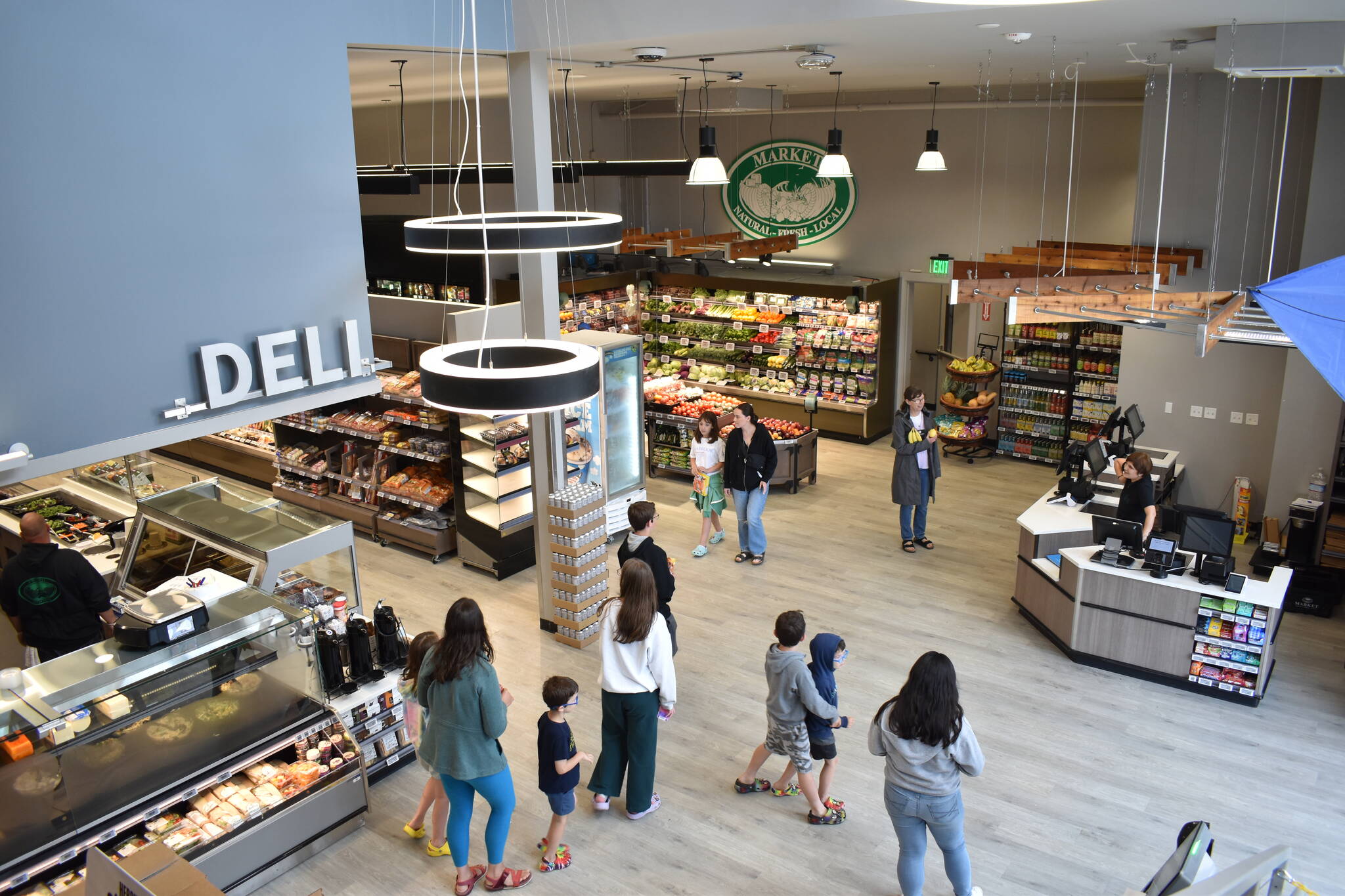It took 20 years for Casey Roloff to curate a paradisal resort town from a forest-filled bluff on the Washington coast. By his vision, Seabrook is now the beating heart of a larger skeleton that might take another two decades to be fully fleshed out.
That’s the length of time detailed by a pair of development agreements approved by Grays Harbor County in the last eight months, which allow Roloff, Seabrook’s founder, to move ahead on two large neighborhood developments totalling 365 acres and subdividing a maximum of 1,100 new lots, about twice as many than the number built so far.
The new developments are “basically two villages straddling the town of Seabrook,” Roloff said.
“We were running out of land to develop and build houses on,” Roloff said in an interview Wednesday. “This assures the county that we’re going to be building out here for the foreseeable future and it’s not just going to run out.”
In its 20 years of existence, Seabrook has built about 600 homes, Roloff said, averaging about 30 homes per year.
“We’d like to double that pace,” Roloff said.
Development agreements are contracts between jurisdictions and property owners detailing rules between the two parties during development. The agreement ensures those rules won’t change for Seabrook during the 20-year length of the contract, said Jane Hewitt, principal planner for Grays Harbor County.
Seabrook is a private company, not an incorporated municipality, that owns land in Grays Harbor County.
The development agreements, labeled “Seabrook First Addition” and “Seabrook Second Addition,” detail a collection of approved uses — hotels, pools, parks, restaurants, barns, orchards, gardens and ziplines, among others — but not specifically how those items might be arranged. While Seabrook submitted preliminary designs for neighborhood layouts, those won’t be set in stone until final plats are submitted at some point within the next six years, which will detail the actual number of lots contained in each subdivision, according to Grays Harbor County Planning Director Suresh Bhagavan.
The agreements were crafted by the county’s planning department this year and approved by the county’s planning commission and board of commissioners during meetings earlier this week and in December 2022. They allow for flexibility as Seabrook moves forward with building — planners will have to stick to approved uses but can shift aspects like street design when necessary, which also requires more creativity, Roloff said.
“Thankfully the county is very flexible in the way that we get approved, which is the right approach,” he said.
County commissioners have also approved a road variance in the area of Seabrook, allowing the town to adjust speed limits on state Route 109 to better fit street designs.
The flexibility also allows Seabrook to build based on market conditions, Roloff said. The agreements state construction will occur in phases, with 30-100 lots built each phase. Roloff said he hasn’t determined when they’ll break ground on either project.
Each new village will have its own “personality and energy,” Roloff said. In general, homes in the smaller, southern development — 222-acre “Pacific Grove” — will likely be “a little more upscale, probably, than Seabrook,” because of ocean views and access, and redevelopment of the Sandpiper Hotel, which Seabrook purchased within the past two years. The larger development to the north — tentatively named “Maker’s Village”— will feature an emphasis on art and handcrafted goods, Roloff said.
“Seabrook will be the primary town center, but to meet objectives of walkability and bikeability and keeping people out of their cars, they have their own retail as well,” Roloff said.
Both developments will replace swaths of second-growth forest land. Environmental review includes geology and wetlands surveys, archaeological and cultural artifact surveys, and review under the State Environmental Policy Act. In both cases SEPA review found the developments will “not have a probable significant adverse impact on the environment.”
Hewitt said the development agreement ensures rules around land use and activities for Seabrook’s development won’t change during the length of the 20-year period. Hewitt said another primary point of the agreement states Seabrook won’t be subject to the county’s short-term rental regulations, as long as the rental’s are managed by Seabrook’s hospitality department.
Roloff said the short-term rental clause was included in the agreement because Seabrook’s short-term rental system is largely different from other parts of the county.
“We’re building from scratch, so it’s not like we’re going into an existing neighborhood and putting in short-term rentals next to people who just retired there, or raising a family there,” Roloff said, adding Seabrook’s model has already set up infrastructure, like staffing and security, to avoid problems usually associated with short-term rentals.
In the current town of Seabrook, between 300 and 400 out of about 600 total homes are currently operated as rentals by Seabrook’s hospitality department.
Short-term rentals in Seabrook generate more lodging tax revenue than any other source in the county, said Vickie Raines, county commissioner for District 3, which includes Seabrook.
Raines said she consistently meets with Roloff to discuss future development plans.
“I’ve always been pro-growth and development,” Raines said in an interview. “I appreciate people that want to come to Grays Harbor to vacation here, spend time here, and of course spend their money here.”
“It’s a nice place to have in Grays Harbor County,” Raines said. “When I was a kid we would go down to Seaside or Lincoln City (Oregon), and we kind of have something like that here now that people want to come visit.”
Roloff said tourism on the Oregon coast could be a model for its neighbor to the north.
“I think the Oregon coast has done a really good job embracing tourism and making the Oregon coast a destination that people want to come to. I think the Washington coast is still somewhat overlooked, and what I would call a best-kept secret. I think people looking for opportunity in Grays Harbor County, there’s still a lot of opportunity.”
Contact reporter Clayton Franke at 406-552-3917 or clayton.franke@thedailyworld.com.


